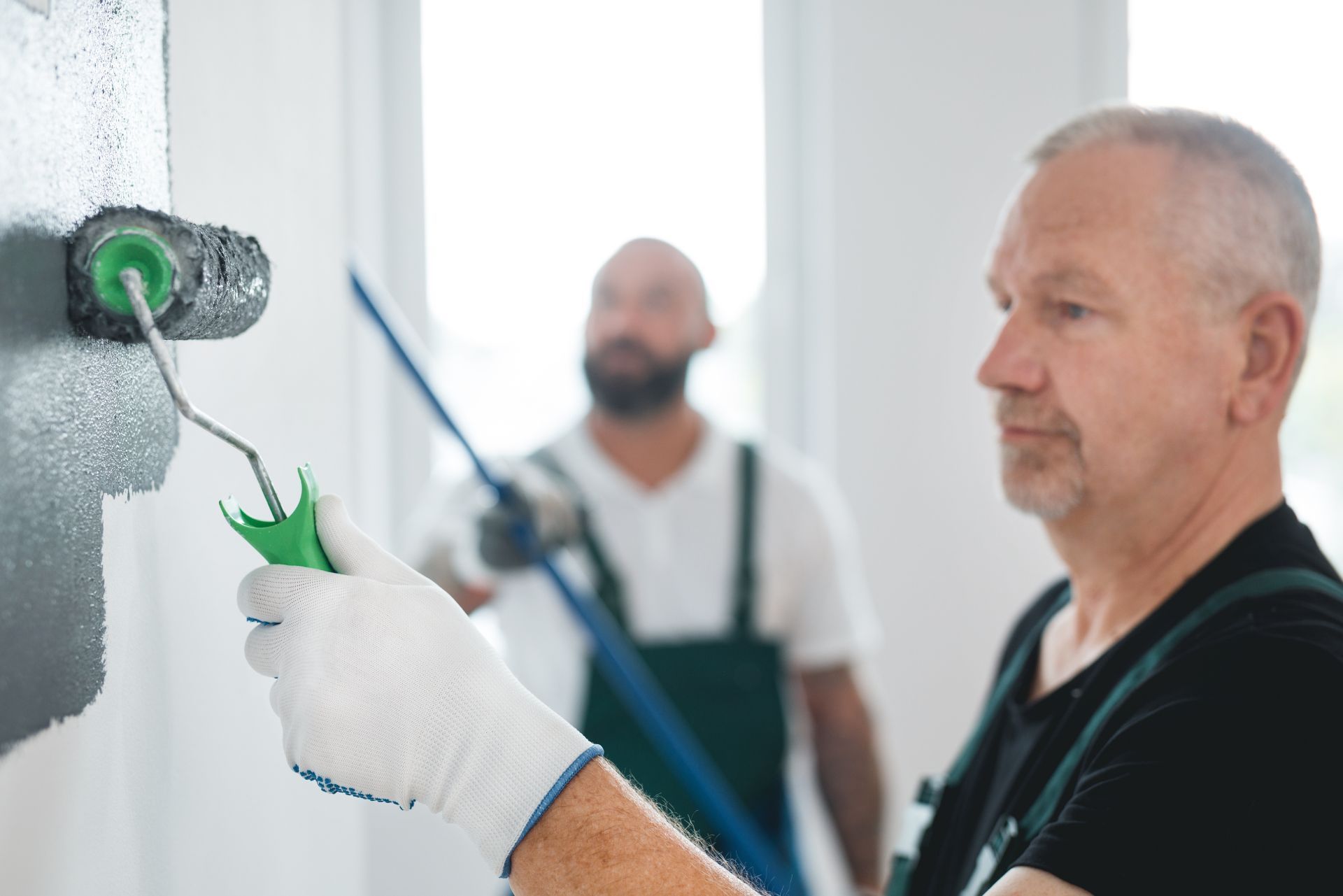Top 3 Recommended Policies

When it comes to painting, whether it’s the exterior of a house or the interior of a commercial space, the importance of having the right insurance cannot be overstated. Painting is not just about aesthetics; it involves various risks that can lead to significant financial losses if not properly managed. This article explores the essentials of exterior and interior painting insurance, including what it covers, why it’s necessary, and how to choose the right policy for your needs.
Understanding Painting Insurance
Painting insurance is a specialized type of coverage designed to protect contractors and businesses involved in painting services. It encompasses various risks associated with the painting industry, ensuring that both the business and its clients are safeguarded against potential mishaps.
Types of Painting Insurance
There are several types of insurance policies that painting contractors may consider. The most common include:
- General Liability Insurance: This is the cornerstone of any contractor’s insurance portfolio. It covers bodily injury, property damage, and personal injury claims that may arise during the course of work.
- Workers' Compensation Insurance: Essential for any business with employees, this insurance covers medical expenses and lost wages for workers who are injured on the job.
- Commercial Auto Insurance: If vehicles are used for transporting equipment or employees, this insurance protects against accidents and damages involving company vehicles.
Why Is Painting Insurance Important?
The painting industry is fraught with potential hazards. From accidents on the job site to damage caused to a client's property, the risks are numerous. Having the right insurance helps mitigate these risks and protects the financial interests of the contractor. It also builds trust with clients, as they can feel confident knowing that they are protected in case of unforeseen events.
Moreover, many clients require proof of insurance before hiring a contractor. This is particularly true for larger projects or commercial contracts, where the stakes are higher. Without adequate insurance, a contractor may miss out on lucrative opportunities.
In addition to the standard coverage options, painting contractors may also want to explore specialized policies such as equipment insurance, which protects tools and machinery from theft or damage. Given the significant investment in high-quality equipment, this type of coverage can be crucial for maintaining operational efficiency. Furthermore, environmental liability insurance is becoming increasingly relevant, as it covers claims related to pollution or environmental damage that may arise from paint spills or improper disposal of hazardous materials.
Understanding the nuances of painting insurance can also lead to better risk management strategies. For instance, contractors who invest in safety training and implement strict safety protocols may qualify for lower premiums, making insurance more affordable. Additionally, staying informed about industry regulations and best practices can help contractors navigate potential liabilities, ensuring they are not only compliant but also proactive in safeguarding their business and clients.

What Does Painting Insurance Cover?
Understanding what painting insurance covers is crucial for contractors and clients alike. While policies can vary, there are several common elements that are typically included.
Property Damage
One of the primary coverages in painting insurance is property damage. This protects against damages that may occur to a client’s property during the painting process. For example, if paint spills on a carpet or a ladder accidentally damages a wall, this coverage can help cover the costs of repairs. Additionally, it may also extend to damage caused by tools or equipment used on-site, such as a sprayer malfunctioning and causing overspray on surrounding surfaces. Having this protection in place not only safeguards the contractor's financial interests but also fosters trust with clients, knowing that their property is protected during the project.
Bodily Injury
Bodily injury coverage is another essential component. This protects against claims made by clients or third parties who may be injured as a result of the painting work. For instance, if a passerby trips over equipment left on a sidewalk and sustains an injury, this coverage can help cover medical expenses and legal fees. Furthermore, it can also encompass injuries sustained by the contractor's employees while on the job, ensuring that they receive the necessary medical treatment without financial burden. This aspect of coverage highlights the importance of workplace safety and the need for contractors to maintain a safe working environment to minimize risks.
Completed Operations Coverage
Completed operations coverage protects contractors against claims that arise after the work has been completed. If a client discovers a defect in the paint job that leads to damage, this coverage ensures that the contractor is protected against potential lawsuits. This is particularly important in the painting industry, where the longevity and quality of a job can be put to the test over time. For instance, if peeling or fading occurs shortly after the project is finished, the contractor may be held liable for rectifying the issue. This coverage not only provides peace of mind for contractors but also reassures clients that they will not be left with unresolved issues after the job is done. Additionally, having this coverage can enhance a contractor's reputation, as it demonstrates a commitment to quality and accountability in their work.
Choosing the Right Insurance Policy
Selecting the right painting insurance policy is a critical decision for any contractor. The right coverage can provide peace of mind and financial security, while inadequate coverage can leave a contractor vulnerable to significant losses. In the painting industry, where accidents can happen at any moment, having the right insurance is not just a safety net—it's an essential tool for business continuity.
Assessing Your Needs
Before choosing a policy, it’s essential to assess the specific needs of the painting business. Consider factors such as the size of the business, the types of projects undertaken, and the number of employees. A small residential painter may require different coverage than a large commercial painting contractor. For instance, a contractor who frequently works on high-rise buildings may need additional liability coverage due to the increased risks involved. Moreover, understanding the types of materials used and the potential hazards associated with them can also influence the type of coverage needed.
Comparing Policies
Once the needs have been assessed, it’s time to compare different insurance policies. Look for providers that specialize in contractor insurance, as they will have a better understanding of the unique risks associated with the painting industry. Pay attention to the coverage limits, exclusions, and deductibles of each policy. It’s also wise to read customer reviews and testimonials to gauge the reliability of the insurance provider, as well as their claims process. A policy that appears affordable at first glance may end up being more costly if the claims process is cumbersome or if the coverage is insufficient when it's needed the most.
Consulting with an Insurance Agent
Consulting with an experienced insurance agent can be invaluable. They can provide insights into the best policies available and help tailor coverage to meet specific needs. Additionally, they can assist in navigating the complexities of insurance contracts, ensuring that all necessary coverages are included. An agent can also highlight optional coverages that may be beneficial, such as equipment coverage for tools and machinery or workers' compensation for employees. Understanding these additional options can help contractors make informed decisions that enhance their overall protection and operational efficiency.
Furthermore, staying updated on industry trends and changes in regulations can also affect insurance needs. For example, new safety standards or environmental regulations may necessitate adjustments in coverage. An informed insurance agent can help contractors adapt to these changes, ensuring that their policies remain relevant and comprehensive. Regular policy reviews, ideally on an annual basis, can also help identify any gaps in coverage or areas where enhancements may be necessary, keeping the contractor well-protected as their business evolves.
Common Exclusions in Painting Insurance
While painting insurance can provide comprehensive coverage, it’s important to be aware of common exclusions that may apply. Understanding these exclusions can help contractors avoid unexpected surprises down the line.
Intentional Acts
Most insurance policies will not cover damages or injuries that result from intentional acts. If a contractor or employee deliberately causes harm or damage, the insurance provider is likely to deny the claim. This exclusion serves as a safeguard for insurance companies, ensuring that they are not held liable for actions that are willful or malicious in nature. Contractors should foster a culture of responsibility and ethics within their teams to minimize the risk of such incidents, as any claims made under these circumstances could not only lead to financial loss but could also tarnish a contractor's reputation.
Wear and Tear
Insurance typically does not cover damages resulting from normal wear and tear. For example, if paint begins to peel due to age or poor maintenance, this would not be covered under a painting insurance policy. This exclusion highlights the importance of regular maintenance and upkeep for any painting project. Contractors should advise clients on the best practices for maintaining painted surfaces, such as periodic inspections and touch-ups, to prolong the life of the paint job. By educating clients on the signs of wear and tear, contractors can help manage expectations and encourage proactive measures that can prevent costly repairs in the future.
Contractual Liability
Many policies exclude coverage for contractual liabilities. This means that if a contractor signs a contract that includes specific liability clauses, the insurance may not cover claims arising from those clauses. It’s crucial to read contracts carefully and understand the implications before signing. Additionally, contractors should consider consulting with a legal professional to ensure that they are not inadvertently accepting liabilities that could expose them to significant financial risk. Understanding the nuances of contractual obligations can empower contractors to negotiate terms that are fair and balanced, ultimately protecting their interests and ensuring a smoother operational flow.
Environmental Hazards
Another common exclusion in painting insurance is coverage for environmental hazards. Many policies will not cover claims related to the use of hazardous materials or the environmental impact of certain paints and solvents. Contractors should be aware of local regulations regarding hazardous substances and ensure that they are using compliant materials. This not only protects their business from potential legal issues but also promotes a safer work environment. By prioritizing eco-friendly products and practices, contractors can differentiate themselves in a competitive market and appeal to environmentally-conscious clients.
Employee Misconduct
Insurance policies often exclude coverage for claims arising from employee misconduct, which can include theft, fraud, or negligence. This exclusion emphasizes the importance of thorough background checks and training for employees. Contractors should implement strict hiring practices and provide ongoing education on company policies and ethical standards. By fostering a trustworthy workforce, contractors can mitigate the risks associated with employee-related claims and enhance their overall business integrity. Additionally, maintaining clear communication channels within the team can help identify and address potential issues before they escalate into serious problems.

Cost of Painting Insurance
The cost of painting insurance can vary widely based on several factors. Understanding these factors can help contractors budget appropriately for their insurance needs.
Factors Influencing Cost
- Business Size: Larger businesses with more employees and higher revenue may face higher premiums compared to smaller operations.
- Coverage Amount: The level of coverage selected will significantly impact the cost. Higher coverage limits typically result in higher premiums.
- Claims History: A contractor with a history of claims may face higher premiums, as they are considered a higher risk by insurance providers.
Average Premiums
On average, painting contractors can expect to pay anywhere from $500 to $2,000 annually for general liability insurance. However, this figure can vary based on the factors mentioned above. It’s essential to obtain quotes from multiple providers to find the best rates.
Ways to Save on Insurance
There are several strategies that contractors can employ to save on insurance costs. These include:
- Bundling Policies: Many insurance companies offer discounts for bundling multiple policies, such as general liability and workers' compensation.
- Implementing Safety Protocols: Establishing and maintaining a strong safety program can reduce the likelihood of claims, which may lead to lower premiums.
- Maintaining a Clean Claims History: Avoiding claims can help keep premiums lower. Contractors should strive to minimize risks and maintain a good safety record.
Legal Requirements for Painting Insurance
In many regions, certain types of insurance are legally required for contractors. Understanding these requirements is crucial for compliance and to avoid potential legal issues.
State Regulations
Each state has its own regulations regarding insurance for contractors. Some states require general liability insurance, while others may mandate workers' compensation coverage. It’s essential for contractors to familiarize themselves with their state’s specific requirements to ensure compliance.
Licensing Requirements
In addition to insurance, many states require painting contractors to obtain specific licenses. These licenses often have their own insurance requirements, which can vary based on the type of work being performed. Contractors should ensure they meet all licensing and insurance requirements to operate legally.
Consequences of Non-Compliance
Operating without the necessary insurance can lead to severe consequences, including fines, legal action, and the inability to secure contracts. Clients may also be hesitant to hire unlicensed or uninsured contractors, which can impact business growth.
Conclusion
In the world of painting, having the right insurance is not just a safety net; it’s a vital component of a successful business strategy. From protecting against property damage and bodily injury to ensuring compliance with legal requirements, painting insurance offers peace of mind for contractors and clients alike.
By understanding the different types of coverage available, assessing individual needs, and consulting with insurance professionals, painting contractors can secure the best policies for their operations. As the industry continues to evolve, staying informed about insurance options and requirements will be key to thriving in the competitive painting market.
Ultimately, investing in proper insurance is an investment in the future of the painting business. With the right coverage in place, contractors can focus on what they do best—creating beautiful spaces—while knowing they are protected from the unexpected.
Contact Us


